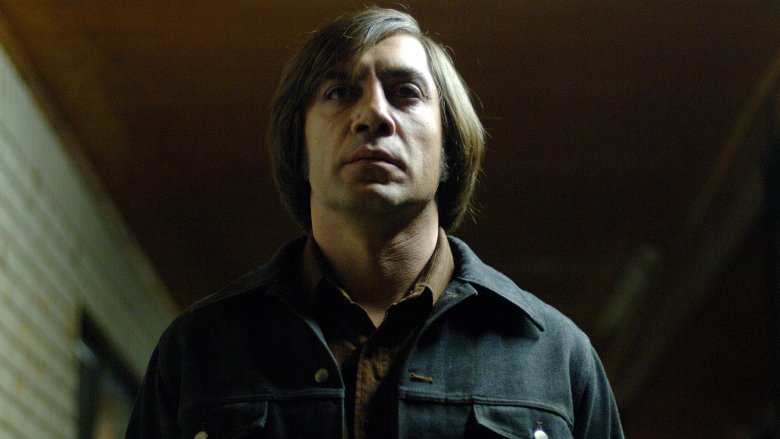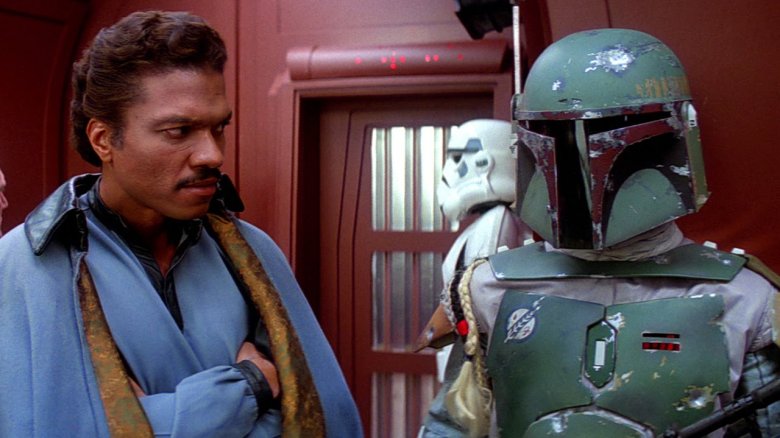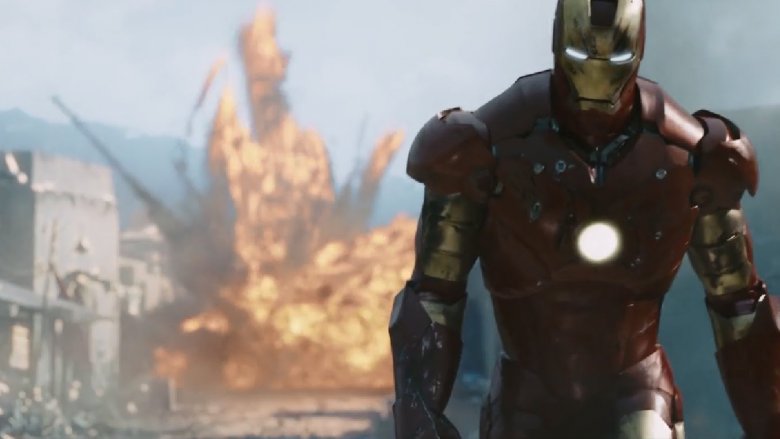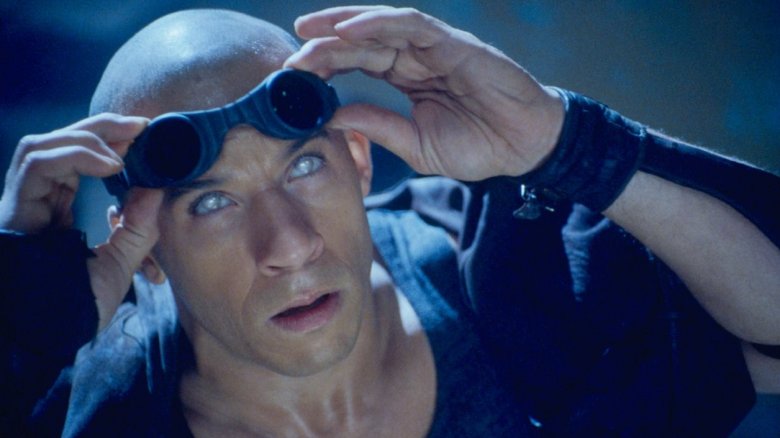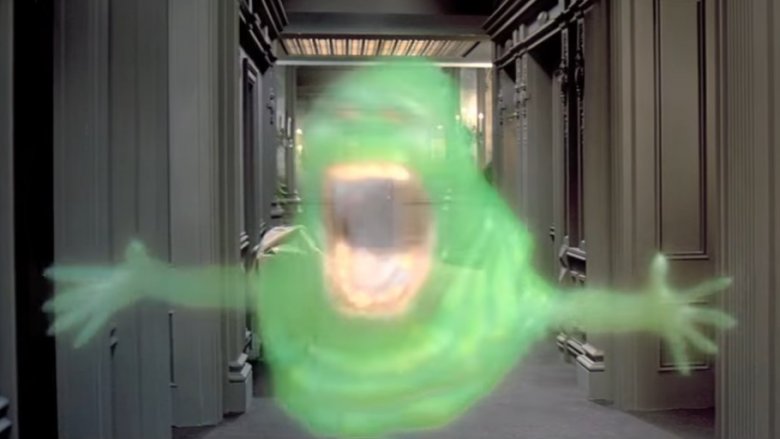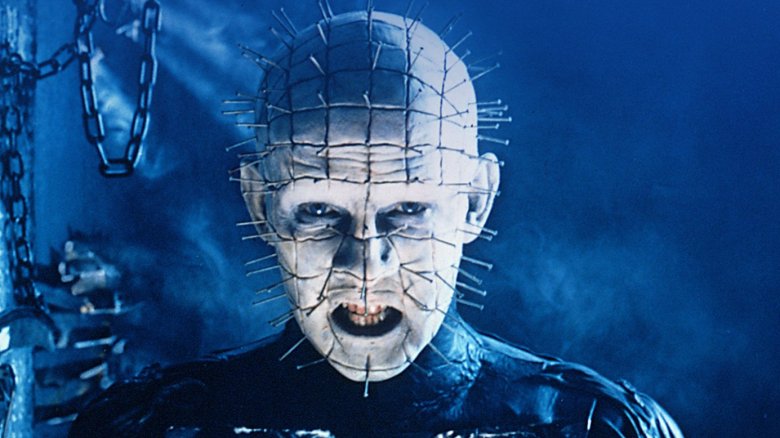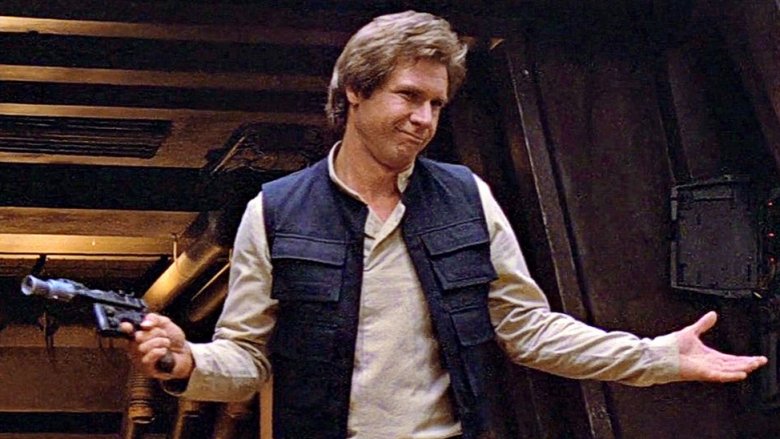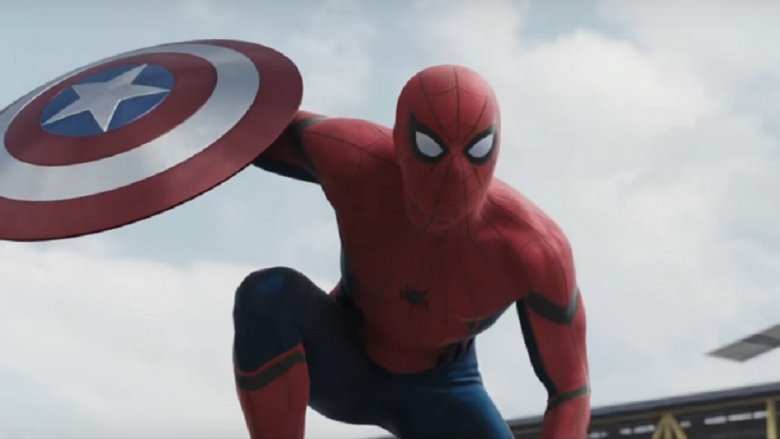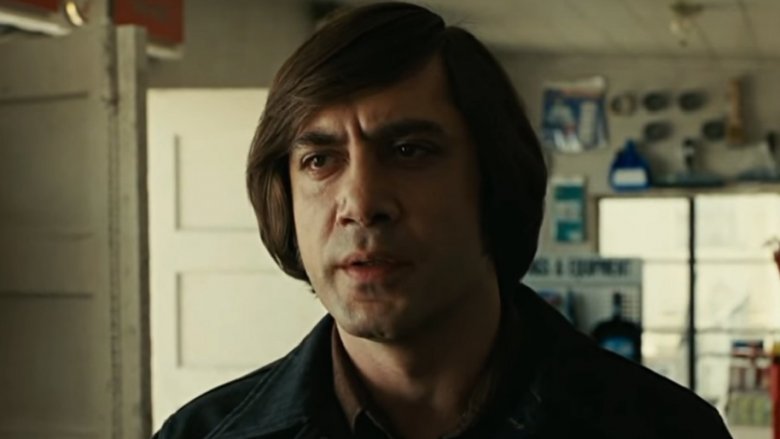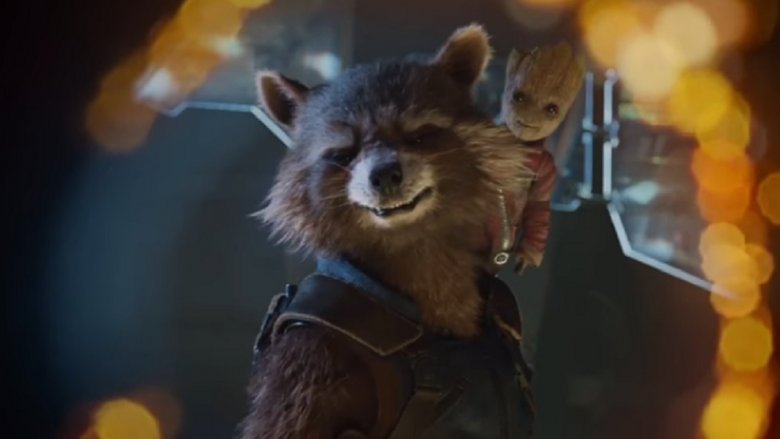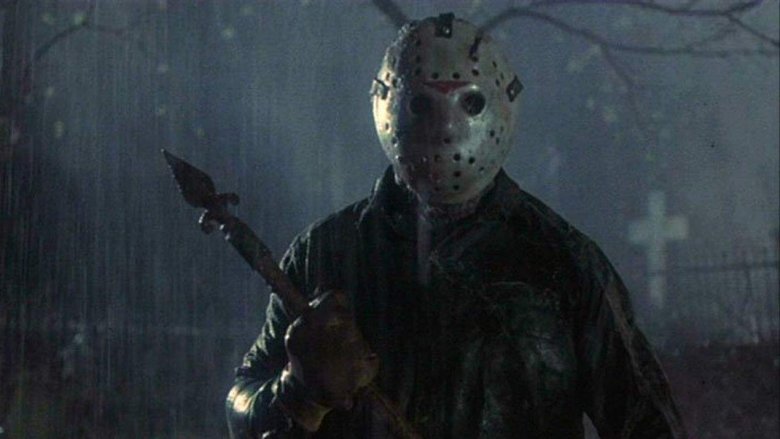Iconic Movie Characters That Were Never Supposed To Be So Popular
Hollywood has given us truckloads of vividly drawn, complex characters designed to capture our imaginations. Think about what Star Wars would have been like with just some regular guy standing in for Darth Vader, or whether Raiders of the Lost Ark would have taken such firm hold in popular culture without Indiana Jones' trademark wit, whip, and hat. Particularly when it comes to tentpole pictures, filmmakers tend to swing big in attempting to give us memorable leads, because those (of course) translate directly to bigger box office.
But every once in awhile, a cinema icon will emerge more or less by accident. Whether they were ported over from another medium in which they were never expected to thrive, promoted up from bit player due to unexpected public demand, or simply so strongly drawn and acted that nobody could forget them, these are some of the most iconic film characters of all time — even though they were never intended to be.
Boba Fett
Boba Fett has become such a well-known part of Star Wars lore that it's easy to forget that he didn't even appear in the first film (unless you count his cameo in the 1997 Special Edition, which you should not). He made his first appearance in 1980's The Empire Strikes Back, in which he was given a grand total of four speaking lines comprising a whopping 27 words. In Return of the Jedi, he had no lines at all — which is perhaps part of his mystique. He's a man of few words, and his Mandolorean armor was so cool that kids couldn't wait to get their hands on the action figure. Of course, the mystique grew due to the fact that the figure had to be ordered from Kenner, and was nearly impossible to find in stores.
In fact, Boba's minor role and unceremonious death in Jedi was a result of George Lucas not knowing what his audience wanted, which would come to be something of a trademark. Boba was originally intended to be the main villain of that film, as Lucas had planned to make audiences wait for the Luke/Vader fight until the next trilogy — but when those plans were scrapped, he cut the part extremely short, tossing Boba into the Sarlacc pit in the film's first act. He simply had no idea how popular the character would be. Over three decades later, they're still trying to figure out a Boba Fett spinoff film.
Iron Man
When Marvel Studios was making plans for its Cinematic Universe in 2006, they famously didn't hold the film rights to any of their most popular characters. Out of the core Avengers, the Hulk was the most popular, but Ang Lee's 2003 film Hulk (which received mixed reviews from critics and fans) had them wary of using the Green Goliath to set off the MCU. Unsure of what to do, they held a series of focus groups — but not with moviegoers. They asked groups of children which Marvel toy they'd most like to play with, and the answer was pretty clear — Iron Man.
At this time, the studio was still of the mindset that merchandising would be where the big bucks were. The only problem was that awareness of the character was so low that the vast majority of focus group participants had no idea who the character was, or even that he wasn't actually a robot. Marvel even tapped future Deadpool director Tim Miller to create a computer-animated "advertorial" starring old Shellhead (along with Spider-Man and the Hulk) just to try to clue kids in as to who Tony Stark was, but the character's obscurity ended up being slightly less of a problem than anticipated. 2008's Iron Man was a surprise smash, and Robert Downey Jr.'s Tony Stark became the face of the most successful film franchise ever — but it wouldn't have been so if the kids had preferred Captain America toys.
Riddick
In the 2000 sci-fi thriller Pitch Black, a spaceship transporting passengers in cryostasis crash-lands on a seemingly lifeless planet. But it's not quite as lifeless as it first appears — it's just that the local population only comes out at night, and they're violent, predatory monsters. Fortunately (maybe) for the crew, one of their charges is notorious criminal Richard B. Riddick (Vin Diesel), who sports surgically modified eyes which allow him to see perfectly in the dark — and if he's a little morally ambiguous, he's also badass enough to potentially be their savior.
Riddick was Vin Diesel's breakout role, not to mention the part he was born to play. The character's dark, intense charisma immediately struck a chord with audiences, and while Pitch Black's success practically demanded a sequel, it was decided in short order that it should focus on the first film's surprise star. Unfortunately, 2004's The Chronicles of Riddick — while highly anticipated — was not a hit, which actually did very little to keep the character from fading from the popular consciousness. Riddick has lived on through video games, the animated film The Chronicles of Riddick: Dark Fury, and a slightly more well-received 2013 theatrical feature simply titled Riddick, which Diesel apparently brought into existence through the sheer force of his devotion to the character.
Slimer
In 1984's Ghostbusters, the boys' first successful entrapment and containment operation involves a "focused, non-terminal, repeating phantasm or a class-five full-roaming vapor" which is terrorizing a ritzy hotel. The ghost isn't given a name in the film, but Peter Venkman's (Bill Murray) description of what happened to him after his encounter with the apparition was all it took for audiences to give him one: Slimer, a name which has not only stuck but may have become more recognizable than those of the Ghostbusters themselves.
Slimer was created under extreme duress by visual effects artist Steve Johnson, who worked on tons of different models for the little guy before receiving his final instructions on the last day before the scene would be shot. "I'd been working for six months sculpting hundreds of Slimer variations," recalled Johnson in a Bloody Disgusting interview, "and they finally said 'make him look more like [John] Belushi'... So I pulled out a stack of headshots of John Belushi, poured a gram of cocaine on it and started chopping lines up." Johnson believes Belushi's actual ghost appeared to assist him with the project, even modeling for him before admonishing him to stay away from coke and disappearing. Amazingly, the character became so popular that The Real Ghostbusters cartoon series was retitled Slimer! and the Real Ghostbusters for its fourth season, and the character appeared in the 2016 theatrical reboot — in which he almost got a full-on origin story.
Pinhead
When Clive Barker burst onto the literary scene in the mid-1980s with his short story collections Books of Blood, he was anointed "the future of horror" by no less an authority than Stephen King. Naturally, Hollywood was eager to get its hands on a Barker property, and the then-up-and-coming author made a deal: he would write and direct the film adaptation of his novella The Hellbound Heart in exchange for the rights to any future films. There didn't seem to be much of a downside for Barker, as Heart was a self-contained story that didn't exactly lend itself to the sequel treatment. But a funny thing happened: 1987's Hellraiser was a hit, and one of its incidental characters became an unexpected star.
He isn't even the film's main villain, but the demonic figure referred to only as "Lead Cenobite" in the film took on a life of its own as Pinhead, an articulate and strangely well-mannered monster who would anchor the franchise that nobody ever expected Hellraiser to become. Veteran actor Doug Bradley reprised the role in a slew of sequels, helping to cement the character's status as a horror icon every bit the equal of Freddy Krueger or Michael Myers. Having little to do with the sequels, Barker even felt the need to kill the demon off permanently with his 2015 novel The Scarlet Gospels — not that this prevented him from returning to the screen.
Han Solo
When George Lucas was casting for the original Star Wars, he resisted considering any actors from his previous production American Graffiti, which ruled out a young up-and-comer by the name of Harrison Ford. For the role of Han Solo, Lucas looked at hot talents such as Kurt Russell and Christopher Walken — but casting consultant Fred Roos had other ideas. He hired Ford, not as an actor but as a carpenter, to install a door at the studios where auditions were being held. The gambit worked.
Although a relative unknown at the time, we now know that Ford was an A-list actor in waiting, and he brought a sly wit and mountains of charisma to a character that could otherwise have been more of a stock sidekick. Although Han Solo immediately became wildly popular, the part failed to net Ford the kind of scripts he was looking for (it was Raiders of the Lost Ark and Blade Runner that accomplished that), and by Return of the Jedi he famously lobbied to have Han killed off. He would eventually get his wish, triumphantly returning to the franchise with 2015's Star Wars Episode VII: The Force Awakens, in which he was given an epic death scene befitting one of the most beloved characters in Star Wars history.
Spider-Man
In the early '60s, Marvel Comics editor Stan Lee and artist Steve Ditko wanted to take a trial run with a new kind of hero — just a kid, with real-world problems, who happened to have the proportionate strength and agility of a spider. Publisher Martin Goodman, however, wasn't having any of it. "Martin told me three things that I will never forget," Lee later recalled. "He said people hate spiders, so you can't call a hero 'Spider-Man.' Then, when I told him I wanted the hero to be a teenager... Martin said that a teenager can't be a hero, but only a sidekick. Then, when I wanted him not to be too popular with the girls and not great-looking or a strong, macho-looking guy, but just a thin, pimply high school student, Martin said, 'Don't you understand what a hero is?'"
Goodman eventually relented, but only partially. Spider-Man made his debut in the final issue of a dying magazine, Amazing Fantasy — and it became immediately apparent that the publisher had sorely misjudged the needs of his teenage audience. Readers finally had a hero they could identify with, and by the end of the decade, Spidey was Marvel's flagship character. It would only take roughly 30 years for Hollywood special effects technology to catch up to the web-slinger's abilities, but two film series and one MCU reboot later, puny Parker is guaranteed box office gold.
Anton Chigurh
Joel and Ethan Coen have one of the more distinguished filmographies in modern American cinema, and any one of perhaps a half-dozen films could be cited as their masterpiece, depending on whom you ask. But 2007's No Country for Old Men, an adaptation of the Cormac McCarthy novel of the same name, may be the work that receives this designation most often. It's the story of an ordinary guy who stumbles upon $2 million in drug money, bringing him into conflict with the man who has been hired to recover that money — Anton Chigurh, a hitman with brutally efficient methods and a strangely rigid sense of morality.
The role could have been filled by any number of steely Hollywood badasses, but went to Javier Bardem, whose singularly bizarre portrayal elevated the part from stock bad guy to instant icon. From his weird haircut to his oddly alien manner of speech to the detached air with which he carries out his job, Bardem created a ruthless, terrifying killer of the type which had never been seen on film before — one which seems more like a relentless force of nature than a human being. No Country will never get a sequel or a reboot, but that matters little; over a decade after its release, its villain remains unforgettable.
Rocket
Marvel Comics artist Bill Mantlo is perhaps best-known as the creator of Cloak and Dagger, a late addition to the MCU courtesy of their hit Freeform TV series. But he's also one of the minds behind one of the most popular film characters in recent years: Rocket, the gun-toting, anthropomorphic raccoon who lends both humor and unexpected pathos to the Guardians of the Galaxy series. Mantlo, a huge Beatles fan, was inspired by the song "Rocky Raccoon," which in fact is not about a raccoon but a man by that name, who comes into town "equipped with a gun, to shoot off the legs of his rival."
Mantlo could apparently never get the image of a gunslinging raccoon out of his head, and the character (then called "Rocky") made his debut in a 1976 issue of Marvel Preview. In the three decades that followed, Rocket would make guest appearances in a grand total of ten books before joining the revamped Guardians lineup in 2008. This lineup, of course, formed the basis for James Gunn's 2014 film — a film that many were expecting to be Marvel's first flop, mostly due to its inclusion of such ridiculous characters as a talking raccoon. This turned out to not exactly be the case, as Guardians of the Galaxy became a blockbuster smash, and Rocket its breakout star; it's almost certainly no coincidence that — spoiler alert — at the conclusion of Avengers: Infinity War, he's the last Guardian standing.
Jason Voorhees
Producers Sean S. Cunningham and Steve Miner famously took out a full-page ad advertising Friday the 13th as "the most terrifying film ever made" — before the screenplay was even written. To make good on their boast, they turned to screenwriter Victor Miller, whose experience was primarily in soap operas but who had an idea for a nifty murder mystery along the lines of Agatha Christie's Ten Little Indians set at a summer camp. His script contained a shocking third-act revelation that the killer was the camp cook Mrs. Voorhees, out to avenge her son Jason's drowning death at the camp years prior. Jason himself made no appearance in the final draft — and wouldn't have appeared in the film either, if legendary effects artist Tom Savini hadn't been greedy for one more jump scare.
Jason's sudden appearance in a dream sequence near the film's end (Savini's idea) became its defining moment, and for the sequel — with which Miller was not involved — the decision was made to make Jason, actually alive the whole time, the killer. Miller never agreed with this, having always seen Jason as a tragic figure — but during the shooting of the third installment, 3-D supervisor and hockey fan Marty Sadoff cemented the character's iconic status when he used a goaltender's mask he had lying around for a lighting test. The mask became a permanent part of Jason's look, and decades later it's still one of the most recognizable images in all of pop culture.
